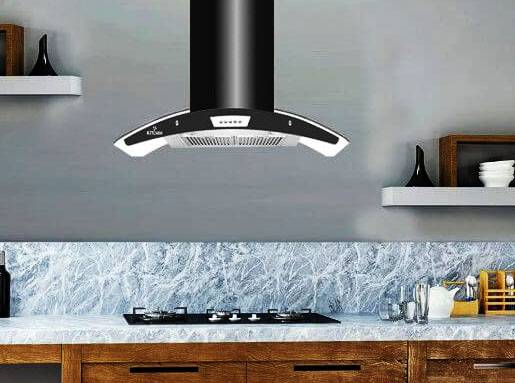
Working Principal of an Exhaust Fan
An exhaust fan is a ventilation device. It draws out polluted air from a room and replaces it with fresh air. Air is considered polluted when it contains high amounts of moisture, carbon dioxide, vaporized chemicals, dust, fungal spores and unpleasant odors. An exhaust fan combat indoor air pollution by ejecting the unclean indoor air into the outside environment and letting in clean air from the outside.
Exhaust fans are used in rooms that have localized humidity like kitchens, bathrooms, and laundromats. They are also used in warehouses to let out hot air, and in factories to expel noxious fumes released during manufacturing.
Exhaust fans are necessary because they prevent damage to goods and property due to mildew, chemical deposition and over-heating. They are also critical for the health of the people living and working in places where there are high levels of indoor air pollution.
How it works ?

An exhaust fan has a rotating arrangement of angular blades driven by a motor. These blades slice through the stationary air, collecting chunks of it and pushing them out of the room. Consequently, fresh air from elsewhere is able to enter the room and occupy the space left behind by the outgoing air.
The amount of air an exhaust fan displaces is measured in cubic feet per minute (or cubic feet per hour or cubic meter per hour), and it depends on the size and speed of the fan. The effectiveness of a fan depends on the size of the room, the number of occupants, and the desired air change rate for that space. It also depends on the nature of activity conducted in that space. For instance, a bathroom without a shower needs roughly 8 air changes per hour while one with a shower needs around 20.
A ventilation fan may be powered by an electric motor, internal combustion engine, hydraulic motor, handcrank, or solar power. It may be fitted with a sensor to kick start it into motion every time steam collects in the room.
The number of blades of the fan may vary from 3 to 5. It may also feature a louvres guard which is a set of movable angled slats covering the outer face of the exhaust fan. A louvers guard protects the fan from rainwater, and prevents entry of dust, birds and insects.
Some exhaust fans are equipped with capacitors. Capacitors are electrical gadgets that regulate the flow of electric energy. In exhaust fans, they control the amount of electricity flowing into the fan’s motor. When a higher speed is selected, the capacitor sends more electricity to the motor, and as a result, the blades rotate faster. This translates into more rotations per minute and faster and better ventilation.
Exhaust fans can be classified into two types: consumer and industrial. Consumer exhaust fans are used in homes in kitchens, showers and lavatories. They are lightweight and smaller in size. Industrial-grade exhaust fans are used in factories, mills and warehouses. They are more powerful, consume more electricity, and are larger in size.
Conclusion :
Exhaust fans perform a vital activity in air purification. They get rid of the stale indoor air and keep clean air circulating in the room. A kitchen exhaust fan removes air filled with oil droplets, moisture, and cooking smells. A bathroom exhaust fan takes out moisture and bad odors.
An industrial exhaust fan ejects harmful chemical fumes, smoke, and hot air from the insides of manufacturing units. No matter what the size or layout of the space, an exhaust fan invariably makes the air in the enclosed space better and more breathable. It is important for health reasons to have your home and workplace well ventilated at all times. It helps keep allergies and respiratory issues at bay.
Pro Tips : Read our detail study on vacuum cleaning process and technology behind robotic vacuum systems.
Check comprehensive study on – What causes air pollution ?

